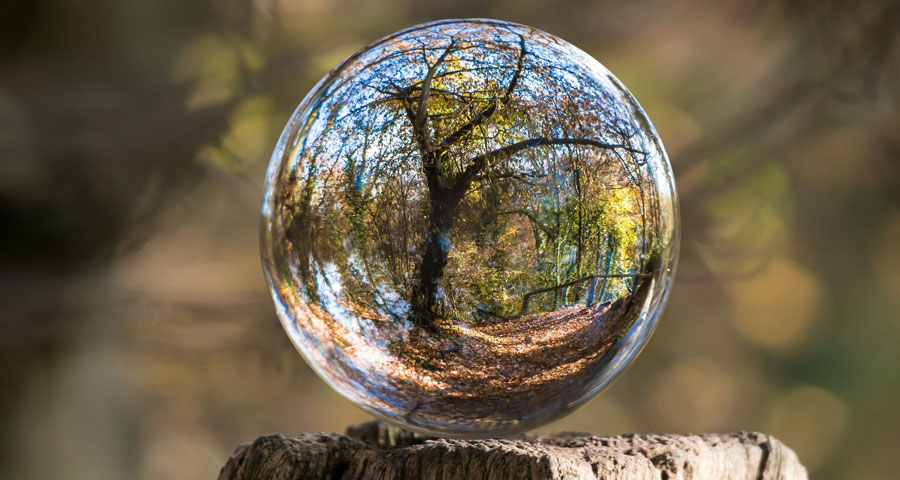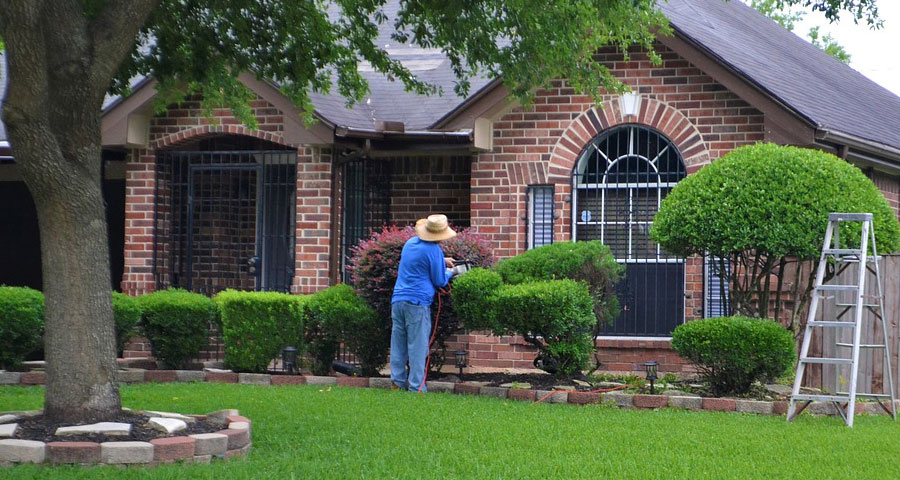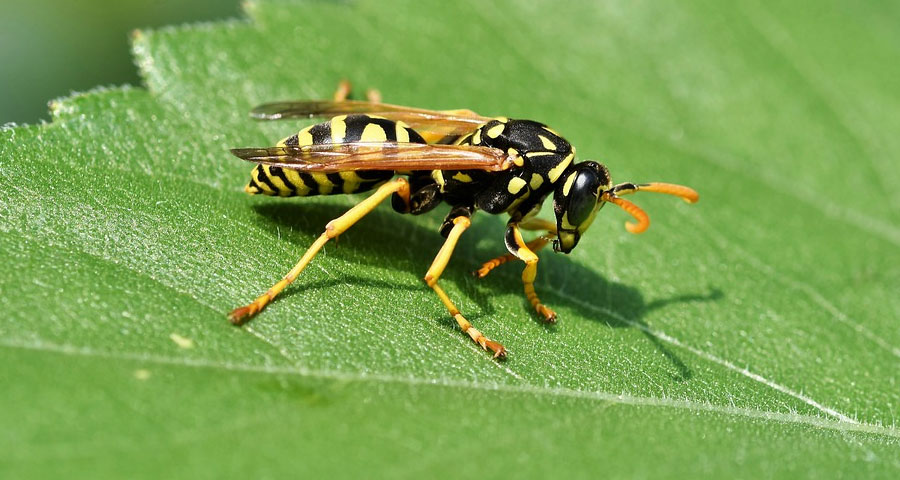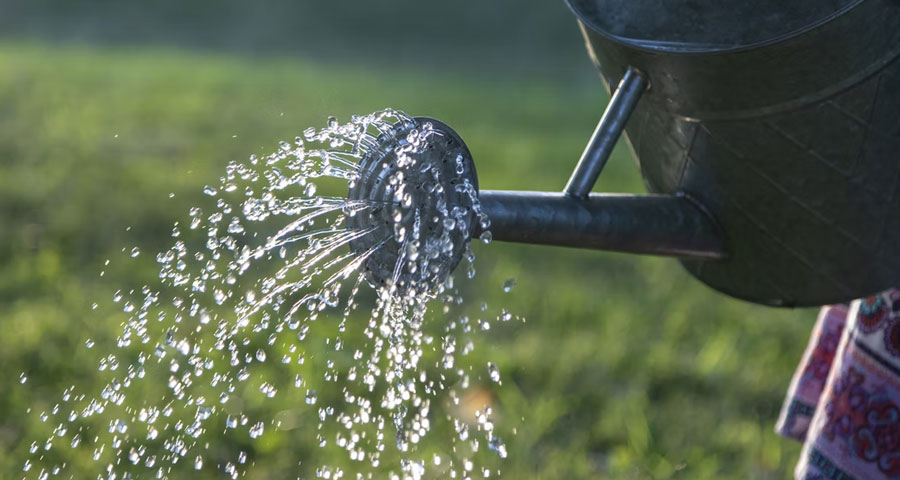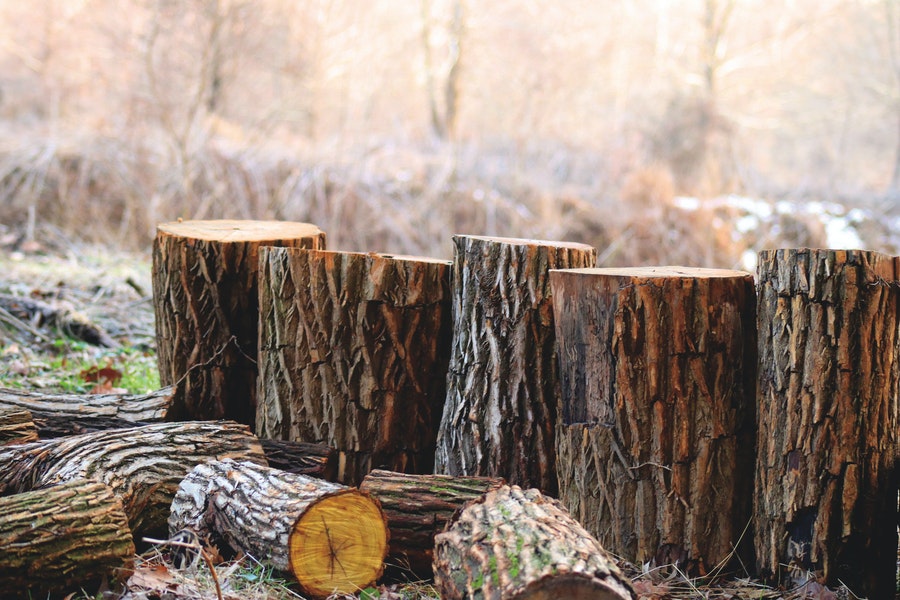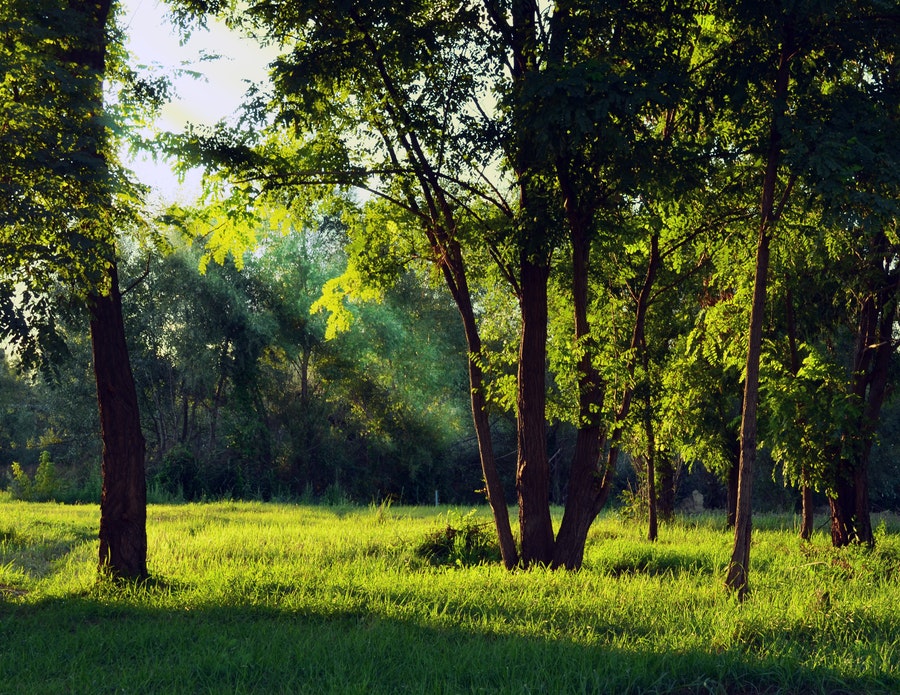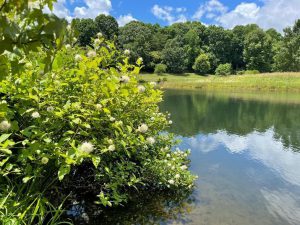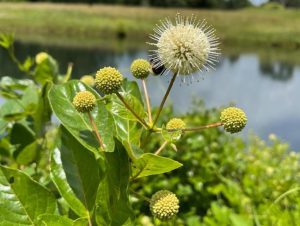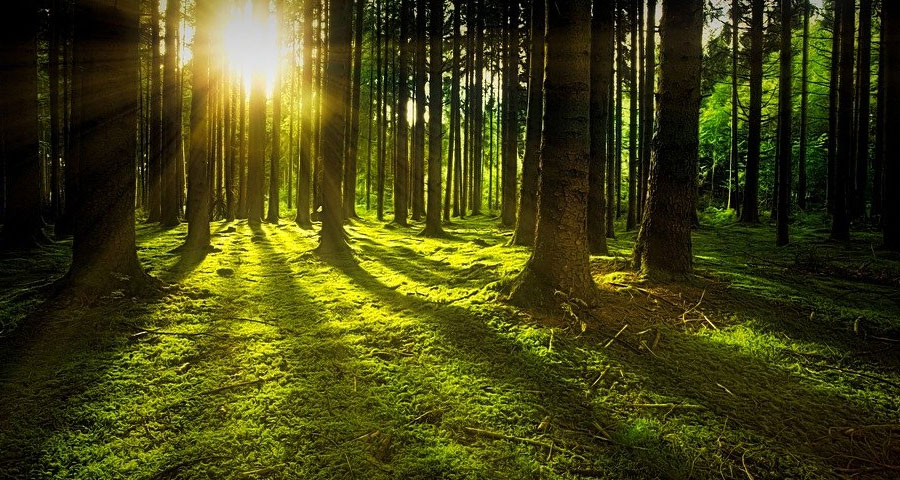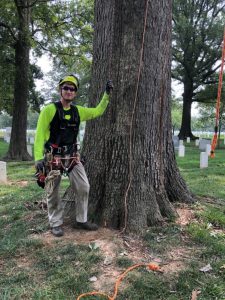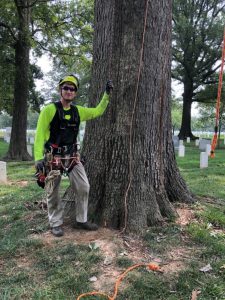Research shows that trees with multiple (codominant) stems have a higher likelihood of failure than those with a single stem so it is important to address this trait – the earlier, the better. To explain, codominant stems occur when two or more stems grow upward from a single point. This creates a v-shaped crotch that typically indicates a structural issue.

A codominant stem with a “V” crotch.
Tree trunks need wood tissue to hold the tree up, particularly in windy conditions. When codominant stems exist, there is less direct connection of this wood tissue, creating a weak point in the tree that is more likely to fail. In some cases, bark on the side facing the other stem is captured in between the stems (included bark or bark inclusion). Generally, this makes the attachment even weaker.
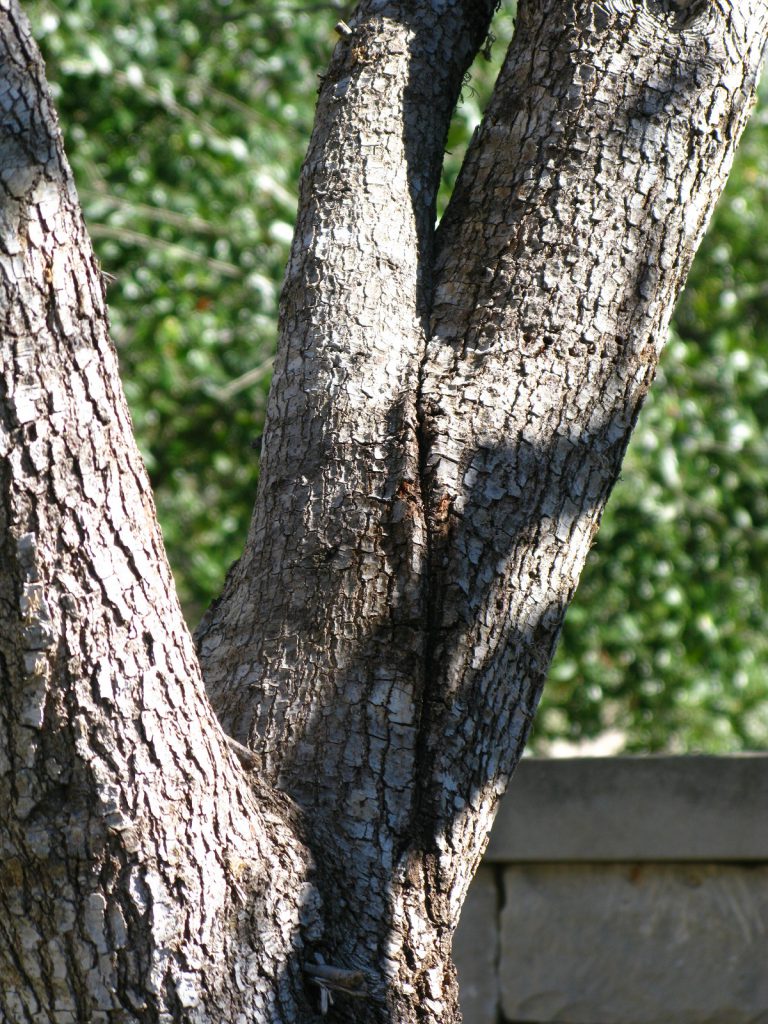
Included bark is clearly visible on the right stem.
Preventing Codominant Stems in Young Trees
The best way to prevent codominant stems is to prune the tree while it is young. Start a year or two after planting and continue as the tree grows. Structurally pruning a tree several times while it is growing can nearly eliminate this problem. It is important to realize that it costs far less to prune a small tree than to treat a large tree with codominant stems.
What is Structural Pruning?
In the forest, trees tend to crowd each other. As they race upward for sunlight in the sky, they usually maintain a single main stem. Alternatively, when trees grow uncrowded in a landscape, they often develop structural weaknesses like codominant stems. Structural pruning is the technique used to address these weaknesses and guide trees into a strong architecture/form. The objective is to create a strong, healthy structure so that trees are sturdier under wind and other conditions.
With structural pruning, live leaders and lateral limbs are “subordinated,” or reduced, to slow their growth. Consequently, the main stem can develop dominance again. The sooner in life that structural pruning is started, the easier and less costly it is. Waiting until the tree is mature frequently means bigger pruning cuts, cabling and greater expense.
Solutions for Mature Trees
For mature trees, structural pruning may no longer always be the best option. Some issues that have developed over years simply cannot be addressed through pruning at this point. More likely, when a codominant stem is present on a mature tree, a structural support system will be a better option. Structural support systems are steel cables or steel rods that are installed between the codominant stems. These systems reduce movement and improve wind resistance.
Whatever age your tree, codominant stems are a structural problem that you should address. Early pruning and support systems are two methods of increasing the strength and longevity of your trees.
The post Codominant Stems and Reducing Tree Failures first appeared on Tree Topics.

